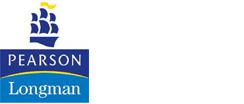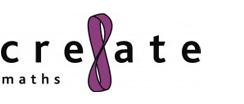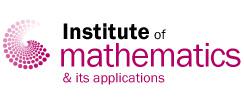Teaching and learning mathematics in the context of health care
Using and interpreting data features heavily in many courses. Scatterplots- Health and Growth requires students to plot data and look for relationships. Areas of mathematics covered include identifying different correlations, outliers, rank correlations. The data examples are taken from the health and medical profession. Five a Day requires students to collect data and use statistical methods to analyse the results using measures of location, measures of spread and statistical diagrams. In An Italian Feast, Sugar and Spice and All Things Nice and Are You a Hare or a Tortoise? students are required to design a survey, collect data, and interpret charts and graphs using a context of diet, nutrition and health.
Nappy Changing Challenge requires students to generate their own data for analysis whilst Handling Data Extension contains examples of the use of cumulative frequency, quartiles and medians in a health context.
UK by Numbers contains real life statistics relating to health whilst Mathematics behind the Water Network in Rural Mountain Areas and Modelling an Epidemic Emergency relates a real life applications of mathematics within public health in which students develop their problem solving skills and use different mathematical formulae.
A Guide to Developing Mathematics Skills in the Adult Social Care Workplace can be useful in identifying which mathematical skills are essential for care workers. Ros Brain and Work Experience in the NHS contain useful information linking to careers in health care.
Mini-course 5: Scatterplots - Health and Growth
The mini-course consists of five units
Health and medical provision forms an introduction to looking at scatterplots, and could be used on its own for that purpose.
Diet: quantity and quality covers fitting a resistant straight line and using residuals from the fit to introduce correlation.
Bodies : how to re-express variables to straighten a plot.
Health care provision considered will help those who need to consider ranking variables.
Health and diet concerns the very important issues which arise when one has more than two variables.
Making Sense of Data is about relationships between two, or more, quantities, looked at by plotting graphs of one against the other. As a result of this mini-course students should:
• look at the shape of the scatterplot before making any calculations
• pay attention in a scatterplot to outlying points, curvature, clustering in one region of the plot and differences across the plot in the variability of a variable
• know that a relationship is not a cause
• understand what different correlations look like on a scatterplot
• know how to fit a resistant straight line
• look at residuals from a fit
• know how to look for a re-expression to straighten a curved plot
• try plotting ranks if either variable is unevenly distributed
• allow for the effect of a variable by fitting and removing it
• know that selecting one group of cases may very much alter the correlation
Five a Day
This resource is designed for students to collect data and then use statistical methods to analyse the results. The activities require that students investigate the extent to which people follow the advice from the Department of Health, which recommends that everyone eats at least five portions of fruit and vegetables each day.
The student sheet contains detailed information and provides a structure for students to conduct their own survey, while the slide show is provided as an introduction to the task.
An Italian Feast
This resource provides statistics about the eating habits of children in Italy and asks students to compare and contrast these with their own eating habits.
Through this activity, students have to interpret charts and graphs, plan how to collect data and design a survey. The resource would link to studies about food, diet, nutrition and health.
Sugar and Spice and All Things Nice *suitable for home teaching*
The resource relates to units on health and growth, teeth and eating, keeping healthy, food and digestion, fitness and health.and focuses on the sugar content of soft drinks and the constituents of a balanced diet. Students use the data provided from secondary sources to answer a series of questions which explore the effect of drinking soft drinks on students' sugar intake and to compare this to recommended daily amounts.
Are You a Hare or a Tortoise? *suitable for home teaching*
This resource involves extracting and interpreting information presented in tables, graphs and charts. Students investigate how activity and calorie intake are related and design their own calorie diary.
Students develop skills in interpreting bar charts and pie charts, interpreting other charts and graphs, using mode averages and interpreting tables. The resource would link to studies about diet and health, and the life processes and nutritional needs of humans and other animals.
Nappy Changing Challenge
The Nappy Changing Challenge provides real data about students for analysis. They undertake a timed, practical, exercise of folding a towelling nappy and putting it onto a toy baby doll. Throughout the task students complete a form for the Nappy challenge and record their completed data in an excel file.
The class data is then used as the basis for an investigation. There are several suggestions which could be used as hypothesis and, once the class results have been analysed, they can be compared to data collected at a Cre8ate maths event.
Focus Year 9 Handling Data Extension
This resource deals with a range of handling data ideas through a variety of contexts. Applicable sections are:
• Children’s health - students interpret cumulative frequency curves by finding quartiles and medians in order to compare sets of data.
• Men and women of the world - students compare and interpret data from scatter diagrams using lines of best fit.
Society Now: UK by Numbers
The 'UK by numbers' series focuses on key areas, such as population, energy and health, and provide important and up-to-date statistics about the UK. The sections include Population, Energy, Health and Education.
Health
This issue gives graphs and statistics showing GP consultations, drug-related admissions, alcohol consumption, cigarettes consumed, cancer survival, life expectancy and teenage conception.
Mathematics behind the Water Network in Rural Mountain Areas
This resource shows the application of mathematics within public health engineering to supply clean water in a rural mountain area. Here students learn about the formulae used to calculate the optimum size of pipes which will ensure good pressure of water throughout the network.
Detailed notes and examples are provided and there are extension activities for students to complete, together with learning outcomes and assessment criteria. The resource is supported by Public Health Engineering.
Modelling an Epidemic Emergency
This case study looks at how mathematicians work with epidemiologists to understand the spread of infections and mitigate their effects. Epidemics can threaten the lives of both humans and animals, so it is essential that we react swiftly to any outbreaks. Mathematicians play a key role in assessing the risks of disease transmission and modelling the effects of vaccination programmes. The resource can be used by teachers to guide their students or shared directly with students to inform them about careers using mathematics.
A Guide to Developing Mathematics Skills in the Adult Social Care Workplace
This guide is intended for learning providers who want to help care workers develop better mathematics skills at work.
The guide is divided into two parts.
Part 1 identifies the mathematics that care workers use at work, offers an overview of the adult social care sector, considers attitudes to mathematics in the adult social care workplace, and describes practical approaches to working with adult social care employers.
Part 2 identifies a range of resources likely to be useful to a learning provider and signposts mathematics learning resources which exemplify good practice.
Ros Brain
Ros Brain, Deputy Head Teacher in a primary school, recruited four STEM Ambassadors from STEMNET to bring alive the topic of poor sanitation for an activity day in her school.
The children got involved in a range of practical and fun experiments which were relevant not only to the themes of problem solving, filtering and spread of disease but also to PHSE, English and history classes. The day gave children a sense of purpose in learning maths and science, opening their minds and giving them motivation.
"It was perfect! The children and staff were delighted. One child claimed it was the best day of his entire life!" said Ros.
The case study includes a set of four fun experiments that teachers can use to recreate the day in their own classrooms: Camembert cheese, Overflowing cesspits, Water filtration and Spreading deadly diseases.
Work Experience in the NHS
Produced by NHS Careers, this toolkit provides background information and advice for schools and other organisations involved in arranging work experience for students in the NHS.











